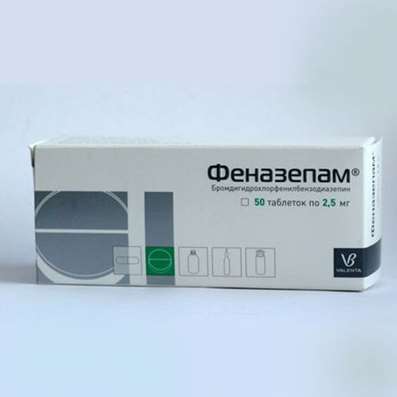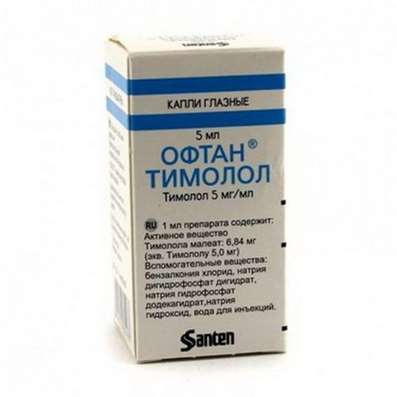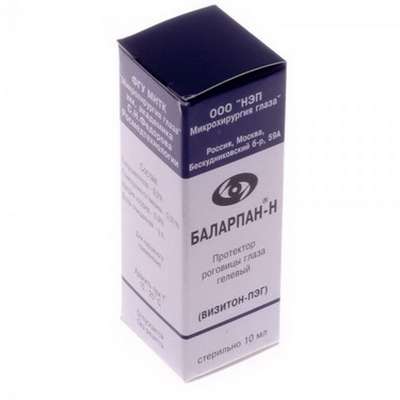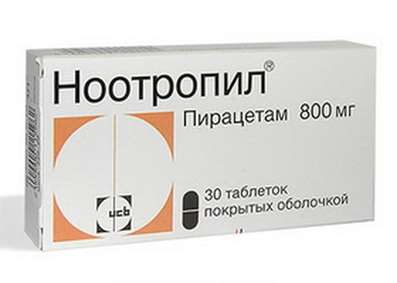Instruction for use: Ordiss
I want this, give me price
Dosage form: tablets
Active substance: Candesartanum
ATX
C09CA06 Candesartan
Pharmacological group
Angiotensin II receptor antagonist [Angiotensin II receptor antagonists (AT1-subtype)]
Nosological classification (ICD-10)
I10 Essential (primary) hypertension: hypertension; Arterial hypertension; Arterial hypertension crisis course; Essential Hypertension; Essential hypertension; Essential hypertension; Essential hypertension; Essential hypertension; Primary hypertension; Arterial hypertension, complications of diabetes; The sudden increase in blood pressure; Hypertensive disorders of blood circulation; hypertensive condition; hypertensive crises; arterial Hypertension; malignant Hypertension; Hypertonic disease; hypertensive crises; accelerated hypertension; malignant hypertension; The aggravation of hypertensive disease; Transient hypertension; Isolated systolic hypertension
I15 Secondary hypertension: Arterial hypertension, complications of diabetes; hypertension; The sudden increase in blood pressure; Hypertensive disorders of blood circulation; hypertensive condition; hypertensive crises; hypertension; arterial Hypertension; malignant Hypertension; hypertensive crises; accelerated hypertension; malignant hypertension; The aggravation of hypertensive disease; Transient hypertension; hypertension; Arterial hypertension; Arterial hypertension crisis course; renovascular hypertension; Hypertension symptomatic; Renal hypertension; Renovascular hypertension; renovascular hypertension; Symptomatic hypertension
I50.0 Congestive heart failure: anasarca heart; Decompensated congestive heart failure; Congestive heart failure; Congestive heart failure with high afterload; Congestive chronic heart failure; Cardiomyopathy with severe chronic heart failure; Compensated chronic heart failure; Swelling with circulatory failure; Edema of cardiac origin; Swelling of the heart; Edematous syndrome in diseases of the heart; Edematous syndrome in congestive heart failure; Edematous syndrome in heart failure; Edematous syndrome in heart failure or liver cirrhosis; right ventricular failure; Congestive Heart Failure; Heart failure stagnant; Heart failure with low cardiac output; Heart failure is a chronic; Cardiac edema; Chronic decompensated heart failure; Chronic Congestive Heart Failure; Chronic heart failure; Change of liver function in heart failure
I50.1 Left ventricular failure: Cardiac asthma; Asymptomatic dysfunction of the left ventricle; Asymptomatic left ventricular heart failure; Diastolic dysfunction of the left ventricle; Left ventricular dysfunction; Changes in the left ventricle with myocardial infarction; Left ventricular heart failure; Violation of the function of the left ventricle; Acute left ventricular failure; Acute cardiac left ventricular failure; Cardiac asthma; Heart failure of left ventricular; Changes in the lungs with left ventricular failure; Precordial abnormal pulsation; Lack of left ventricle
Composition
Tablets -1 table.
active substance: Candesartan cilexetil 8/16/32 mg
Auxiliary substances: pregelatinized starch - 3,75 / 7,5 / 15 mg; Poloxamer 188 - 0.5 / 1/2 mg; Povidone K30 - 4/8/16 mg; Dye iron oxide red (E172) - 0.075 / 0.15 / 0.3 mg; Carmellose calcium - 1.65 / 3.3 / 6.6 mg; MCC - 17.5 / 35/70 mg; Lactose monohydrate - 43.725 / 87.45 / 174.9 mg; Magnesium stearate - 0.8 / 1.6 / 3.2 mg
Description of dosage form
Tablets, 8 mg: pink, capsule-shaped, with a risk on both sides and engraved "8 | C" on one side and "8 | C" on the other side of the tablet.
Tablets, 16 mg: pink, capsule-shaped, with risk on one side and engraved "C | S" on both sides of the risk, on the other side of the tablet - engraving "16".
Tablets, 32 mg: pink, capsule-shaped, with risk on one side and engraved "C | S" on both sides of the risk, on the other side of the tablet - engraving "32"
Pharmachologic effect
Mode of action - antihypertensive.
Pharmacodynamics
Angiotensin II is the main hormone of RAAS, which plays an important role in the pathogenesis of arterial hypertension, heart failure and other cardiovascular diseases. The main physiological effects of angiotensin II are vasoconstriction, stimulation of aldosterone production, regulation of the water-electrolyte state and stimulation of cell growth. Effects are mediated by the interaction of angiotensin II with angiotensin receptor type 1 (AT1 receptors).
Candesartan is a selective antagonist of AT1 receptors of angiotensin II, does not inhibit ACE that converts angiotensin I into angiotensin II, which destroys bradykinin, does not lead to the accumulation of bradykinin or substance P. Blockage of AT1 receptors of angiotensin II results in a dose-related increase in renin, angiotensin I , Angiotensin II and a decrease in the concentration of aldosterone in the blood plasma.
When comparing candesartan with ACE inhibitors, the development of cough was less common in patients receiving candesartan.
Candesartan does not bind to the receptors of other hormones and does not block the ion channels involved in the regulation of CVS functions.
Pharmacokinetics
Suction and distribution. When sucked from the gastrointestinal tract, candesartan tsileksetil through ether hydrolysis quickly turns into an active substance - candesartan, binds firmly to AT1 receptors and dissociates slowly, does not have the properties of an agonist.
Absolute bioavailability of candesartan after oral administration is about 40%. The relative bioavailability of the tablet form compared to the oral solution is approximately 34%. Thus, the calculated absolute bioavailability of the tablet form of the drug is 14%. Eating does not have a significant effect on AUC, i.e. Food does not significantly affect the bioavailability of the drug.
Cmax is achieved 3-4 hours after taking the tablet form of the drug. With an increase in the dose of the drug within the recommended limits, the concentration of candesartan rises linearly. The binding of candesartan to plasma proteins is more than 99%. The plasma Vd candesartan is 0.1 l / kg.
Metabolism and excretion. Candesartan, basically, is excreted from the body by the kidneys and through the intestine in unchanged form and only marginally metabolized in the liver.
T1 / 2 candesartan is approximately 9 hours. Cumulation of the drug in the body is not observed.
Candesartan has a total clearance of about 0.37 ml / min / kg, with a kidney clearance of about 0.19 ml / min / kg. Renal excretion of candesartan is carried out by glomerular filtration and active tubular secretion.
When administered radically-labeled candesartan, about 26% of the administered amount is excreted by the kidneys in the form of candesartan and 7% in the form of an inactive metabolite, whereas in the feces 56% of the administered amount in the form of candesartan and 10% in the form of an inactive metabolite is detected.
Pharmacokinetics in special clinical cases
Floor. The pharmacokinetic parameters of candesartan do not depend on the sex of the patient.
Elderly age. In patients older than 65 years, Cmax and AUC of candesartan increase by 50 and 80%, respectively, compared with younger patients. However, the hypotensive effect and incidence of side effects with candesartan do not depend on the age of the patients.
Impaired renal function. In patients with mild to moderate renal impairment, Cmax and AUC of candesartan increased by 50% and 70%, respectively, whereas T1 / 2 of the drug did not change as compared to patients with normal renal function.
Candesartan increased by 50% and 110%, respectively, in patients with severe renal dysfunction and / or on hemodialysis Cmax and AUC, respectively, and T1 / 2 of the drug increased 2-fold.
Violation of the function of the liver. In patients with mild and moderate impairment of liver function, AUC of candesartan was increased by 23%..
Indications of the drug Ordiss
arterial hypertension;
Chronic heart failure and a violation of the systolic function of the left ventricle (LVEF ≤ 40%) - as an additional therapy for ACE inhibitors or with intolerance to ACE inhibitors.
Contraindications
Increased sensitivity to candesartan and other components of the drug;
Lactose intolerance, lactase deficiency, glucose-galactose malabsorption syndrome;
Severe liver dysfunction and / or cholestasis;
Simultaneous application with a direct inhibitor of renin - a drug of aliskiren or aliskiren containing preparations in patients with diabetes mellitus and / or renal dysfunction (GFR) of less than 60 ml / min / 1.73 m2 of body surface area);
pregnancy;
The period of breastfeeding;
Children's age till 18 years.
Precautions: hemodynamically significant stenosis of the aortic and mitral valves, cerebrovascular diseases, coronary heart disease (CHD), hypertrophic obstructive cardiomyopathy (GOCMP), condition after kidney transplantation, bilateral stenosis of the renal arteries or stenosis of the single kidney artery, primary hyperaldosteronism, severe renal failure (Cl creatinine - less than 30 ml / min), hemodialysis, hyperkalemia; Patients with reduced BCC, general anesthesia and surgical interventions (risk of arterial hypotension, due to RAAS blockade).
Application of pregnancy and breastfeeding
The drug Ordiss® is contraindicated for use in pregnancy because candesartan has a direct effect on RAAS, can cause fetal developmental disorders or have a negative impact on the newborn, up to a lethal outcome. If pregnancy is detected during treatment with Ordiss®, it is necessary to immediately discontinue the drug. When planning pregnancy, it is necessary to transfer the patient to adequate therapy, permitted for use in pregnancy.
Newborns, whose mothers took during the pregnancy drug Ordiss®, should be under medical supervision because of the likelihood of developing arterial hypotension.
It is not known whether candesartan penetrates into breast milk. Do not use Orissis ® during breastfeeding. Breastfeeding should be discontinued if the drug is needed in the mother.
Side effects
The incidence of adverse events is classified according to WHO recommendations: very often - not less than 10%; Often - not less than 1%, but less than 10%; Infrequently - not less than 0,1%, but less than 1%; Rarely - not less than 0.01%, but less than 0.1%; Very rarely - less than 0.01%, including single messages.
From the blood and lymphatic system: very rarely - leukopenia, neutropenia, thrombocytopenia, agranulocytosis.
From the immune system: very rarely - skin rash, itching, hives, angioedema.
From the nervous system: often - dizziness, headache, weakness.
From the respiratory system: often - respiratory infections, pharyngitis, rhinitis.
From the digestive tract: very rarely - nausea.
On the part of the CAS: often - a marked decrease in blood pressure.
On the part of the liver and bile ducts: very rarely - increased activity of liver transaminases, a violation of liver function, hepatitis.
From the musculoskeletal system and connective tissue: very rarely - back pain, arthralgia, myalgia.
From the side of the kidneys and urinary tract: often - a violation of kidney function (see "Special instructions").
Laboratory indicators: very rarely - hyperkalemia, hyponatremia, increase in creatinine concentration, hyperuricemia, decrease in hemoglobin concentration.
Other: very rarely - exacerbation of the gout, tides of blood to the face.
Interaction
Double blockade of RAAS with APA II, ACE inhibitors or aliskiren (direct inhibitor of renin) may be accompanied by an increased risk of arterial hypotension, fainting, hyperkalemia and renal dysfunction (including acute renal failure) compared with monotherapy. Regular monitoring of blood pressure, kidney function and electrolyte content in the blood are necessary in patients taking simultaneously candesartan and other drugs that affect RAAS.
Candesartan should not be used concomitantly with aliskiren or aliskiren-containing drugs in patients with diabetes mellitus and / or renal dysfunction (GFR less than 60 mL / min / 1.73 m2).
With simultaneous use of ACE inhibitors and inhibitors of dipeptidyl peptidase type 4 (eg vildagliptin), the risk of developing Quincke's edema may be increased. With the simultaneous use of candesartan with hydrochlorothiazide, warfarin, digoxin, oral contraceptives (ethinyl estradiol / levonorgestrel), glibenclamide, nifedipine, and enalapril, clinically significant drug interactions have not been identified. Candesartan is metabolized in the liver to an insignificant extent with the participation of the CYP2C9 isoenzyme. The conducted studies on the interaction did not reveal the effect of candesartan on the isozymes CYP2C9 and CYP3A4, the effect on other isoenzymes of the cytochrome P450 system has not been studied.
The simultaneous use of candesartan with other antihypertensive drugs increases the antihypertensive effect.
The experience of using other medicines on RAAS shows that concomitant therapy with potassium-sparing diuretics, potassium preparations, salt substitutes containing potassium, and other means that increase the serum potassium content (eg heparin) can lead to the development of hyperkalemia.
With the simultaneous use of lithium drugs and ACE inhibitors, a reversible increase in the concentration of lithium in the serum and the development of toxic reactions occur. Similar reactions can occur with the use of angiotensin II receptor antagonists, and therefore it is recommended to control the lithium content in serum.
Simultaneous use with NSAIDs, including selective inhibitors of COX-2, acetylsalicylic acid (more than 3 g / day) and nonselective NSAIDs, can reduce the antihypertensive effect of candesartan, and may lead to an increased risk of impaired renal function, including. The development of acute renal failure and an increase in the serum potassium content. Caution is advisable to use a combination of these drugs, especially in elderly patients.
Dosing and Administration
Inside, regardless of food intake, 1 time per day.
Arterial hypertension. The recommended initial dose of Ordiss® is 8 mg once a day. Patients who require a further reduction in blood pressure, it is recommended to increase the dose to 16 mg once a day. The maximum antihypertensive effect is achieved within 4 weeks from the start of treatment. The maximum daily dose is 32 mg / day. In the event that adequate treatment of blood pressure is not achieved against the background of treatment with Ordiss®, it is recommended to add a thiazide diuretic to therapy.
In patients with reduced BCC, there is a risk of developing hypotension, so treatment with a dose of 4 mg / day (1/2 table 8 mg) should be started.
In patients with renal insufficiency. When used in patients with mild or moderate renal failure (GFR not less than 30 ml / min / 1.73 m2), the initial dose is 4 mg / day (1/2 table 8 mg).
The clinical experience of using the drug in patients with severe renal failure (GFR less than 30 ml / min / 1.73 m2) is limited. In these cases, you should consider starting treatment with a dose of 4 mg / day (1/2 table 8 mg).
In patients with impaired liver function. When using the drug in patients with a malfunction of the liver of mild and moderate severity, an initial dose of 4 mg / day (1/2 table 8 mg) is recommended. If necessary, it is possible to increase the dose. The clinical experience of the drug in patients with severe impairment of liver function and / or cholestasis is limited (see "Contraindications").
The drug Ordiss® can be used in conjunction with thiazide diuretics (for example, hydrochlorothiazide), which leads to increased antihypertensive effect.
Chronic heart failure (CHF). The recommended initial dose of Ordiss® is 4 mg once a day (1/2 table 8 mg).
An increase in the dose to 32 mg once a day or up to the maximum tolerated dose is carried out by doubling it at intervals of not less than 2 weeks.
Ordiss® can be used in conjunction with other drugs used for CHF, such as ACE inhibitors, beta-blockers, diuretics and cardiac glycosides.
Special patient groups. Older patients, patients with renal insufficiency or liver dysfunction, do not need to change the initial dose of the drug.
Overdose
Symptoms: an analysis of the pharmacological properties of the drug suggests that the main manifestation of an overdose may be a clinically pronounced decrease in blood pressure, dizziness. Individual cases of drug overdose (up to 672 mg candesartan), which resulted in the recovery of patients without severe consequences, were described.
Treatment: with the development of a clinically pronounced decrease in blood pressure, it is necessary to carry out symptomatic treatment and monitor the patient's condition. Lay the patient on his back and raise his legs. If necessary, the BCC should be increased, for example by intravenous administration of a 0.9% solution of sodium chloride. If necessary, you can apply sympathomimetic drugs. Withdrawal of candesartan by hemodialysis is ineffective.
Special instructions
Simultaneous use of ACE inhibitors, ARA II or aliskiren increases the risk of arterial hypotension, hyperkalemia and renal dysfunction (including acute renal failure). Double blockade of RAAS with the use of ACE inhibitors, APA II or aliskiren is not recommended (see "Interaction").
If a double blockade of RAAS is considered absolutely necessary, then treatment should only take place under the supervision of a physician and must be accompanied by a thorough and regular monitoring of kidney function, electrolyte content and blood pressure. ACE inhibitors and ARA II should not be used simultaneously in patients with diabetic nephropathy.
Impaired renal function. Against the backdrop of the use of Ordiss®, as in the case of other drugs that oppress RAAS, renal dysfunction may develop in some cases.
When using Ordiss® in patients with arterial hypertension and severe renal insufficiency (GFR less than 30 ml / min / 1.73 m2), it is recommended to regularly monitor the potassium content and serum creatinine concentration. The clinical experience of the drug in patients with terminal stage of renal failure (GFR less than 15 ml / min / 1.73 m2) is limited. In such patients, it is necessary to select the dose of Orissit ® under the control of blood pressure.
Patients with CHF should periodically monitor kidney function, especially in patients over the age of 75 and patients with impaired renal function. When increasing the dose, it is also recommended to monitor the potassium content and serum creatinine concentration.
There are no data on the use of Ordiss® in patients with CHF with a creatinine concentration greater than 265 μmol / L (more than 3 mg / ml).
Hemodialysis. During hemodialysis, blood pressure may be particularly sensitive to blockade of AT1 receptors as a result of a decrease in bcc and activation of RAAS. Therefore, patients on hemodialysis need to monitor blood pressure and individually adjust the dose of Ordiss® in accordance with blood pressure indicators.
Simultaneous use with ACE inhibitors in CHF. When used simultaneously with ACE inhibitors, the risk of side effects increases, especially renal dysfunction and hyperkalemia. It is necessary to monitor the clinical status of patients and the corresponding laboratory parameters.
Stenosis of the renal artery. Drugs that affect RAAS (eg, ACE inhibitors) can cause an increase in serum urea and creatinine in patients with bilateral renal artery stenosis or stenosis of the single kidney artery. A similar effect can be expected with APA II.
Kidney transplantation. The experience of using the drug Ordiss® in patients who have recently undergone kidney transplantation is absent.
Arterial hypotension. In patients with CHF in the use of the drug Ordiss®, arterial hypotension may develop. It is also possible to develop arterial hypotension in patients with BCC deficiency, for example, when using large doses of diuretics. In this case, before applying the Ordiss®, it is necessary to correct the BCC.
General anesthesia and / or surgery. Patients receiving angiotensin II antagonists may develop arterial hypotension as a result of blockade of RAAS during general anesthesia and during surgical interventions. In rare cases, arterial hypotension can be pronounced, requiring intravenous fluid and / or vasopressor substances.
Stenosis of the aortic and / or mitral valves, GOKMP. Care should be taken when using Ordiss® in patients with GOKMP or hemodynamically significant stenosis of the aortic or mitral valves.
Primary hyperaldosteronism. Patients with primary hyperaldosteronism are usually resistant to therapy with antihypertensive drugs that affect RAAS, so it is not recommended to use Ordesc® in this group of patients.
Hyperkalemia. The simultaneous use of Ordiss® with potassium-sparing diuretics, potassium preparations or salt substitutes containing potassium, or other drugs that can increase serum potassium levels (eg heparin) may lead to hyperkalemia in patients with hypertension.
Hyperkalemia can also develop in patients with CHF who are taking Ordiss®. On the background of therapy with the Ordiss® drug in patients with CHF, it is recommended to periodically check the potassium content in the blood serum, especially with simultaneous use of ACE inhibitors and potassium-sparing diuretics (spironolactone, triamterene, amiloride, eplerenone (spiropionolactone derivative)).
Are common. Patients in whom vascular tone and renal function predominantly depend on the activity of RAAS (for example, patients with severe CHF, kidney disease, including renal artery stenosis) are particularly sensitive to drugs acting on RAAS. The use of such drugs is accompanied in these patients by severe arterial hypotension, azotemia, oliguria and, more rarely, acute renal failure. The possibility of developing these effects is not ruled out when using ARA II. A sharp decrease in blood pressure in patients with ischemic cardiopathy, cerebrovascular diseases of ischemic genesis with the use of any antihypertensive drugs can lead to the development of myocardial infarction or stroke.
Application in pediatrics. The safety and efficacy of the use of Ordiss® in children under 18 years of age have not been established.
Influence on the ability to drive vehicles and mechanisms. When there are undesirable effects from the central nervous system during therapy with Ordiss®, caution should be exercised when performing actions that require a high concentration of attention and speed of psychomotor reactions.
Release form
Tablets, 8 mg, 16 mg, 32 mg. For 10 tab. In blisters made of PVC / Al / OAA-PVC / PVAH / Al. 3 bl. Are placed in a cardboard box.
By 5 tab. In blisters made of PVC / Al / OAA-PVC / PVAH / Al. 6 bl. Are placed in a cardboard box.
Manufacturer
Teva Pharmaceutical Enterprises Ltd.
Conditions of supply of pharmacies
On prescription.
Storage conditions of the drug Ordiss
In a place protected from moisture, at a temperature of no higher than 25 ° C.
Keep out of the reach of children.
The shelf life of the drug Ordiss
2 years.
Do not use beyond the expiration date printed on the package.

 Cart
Cart





